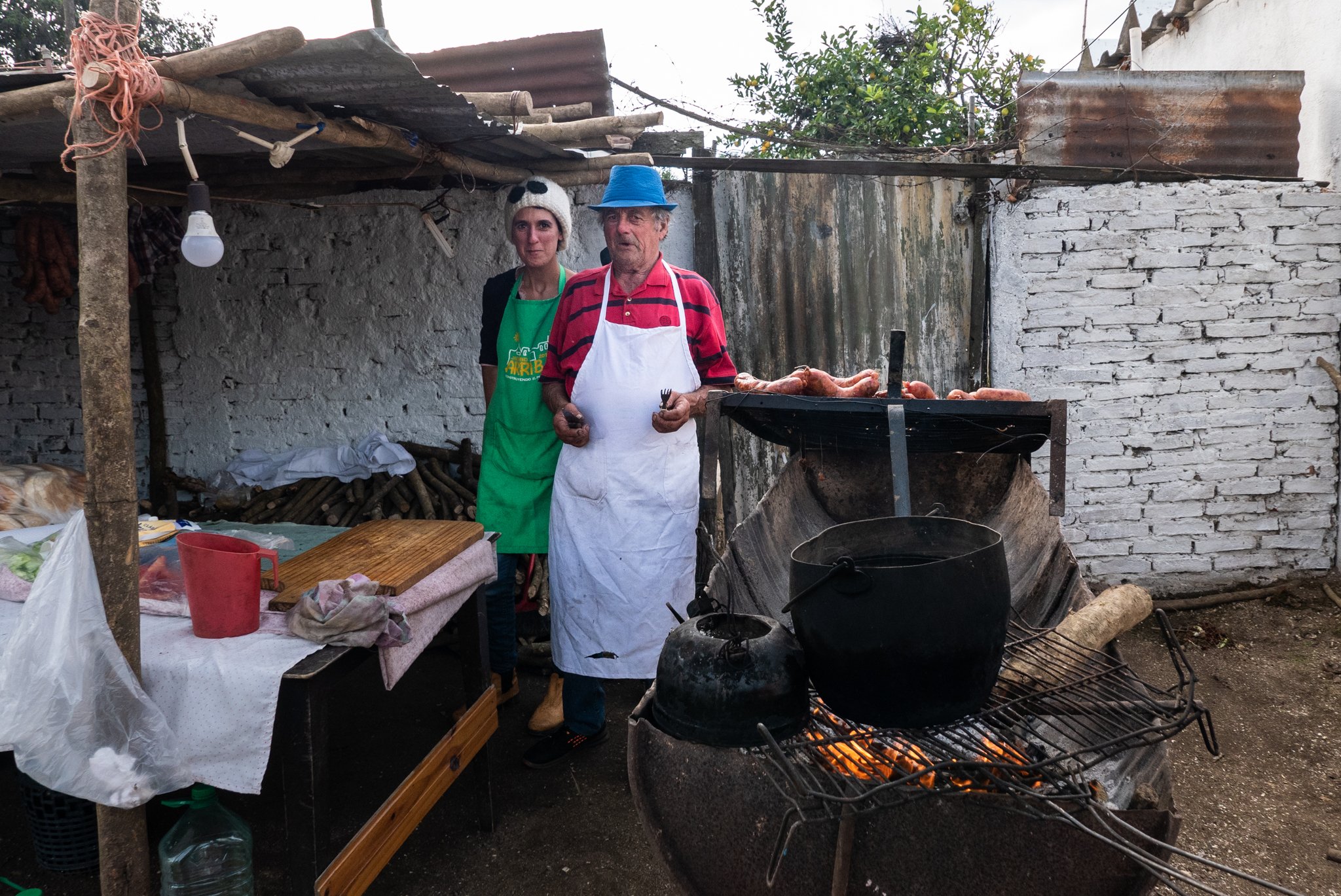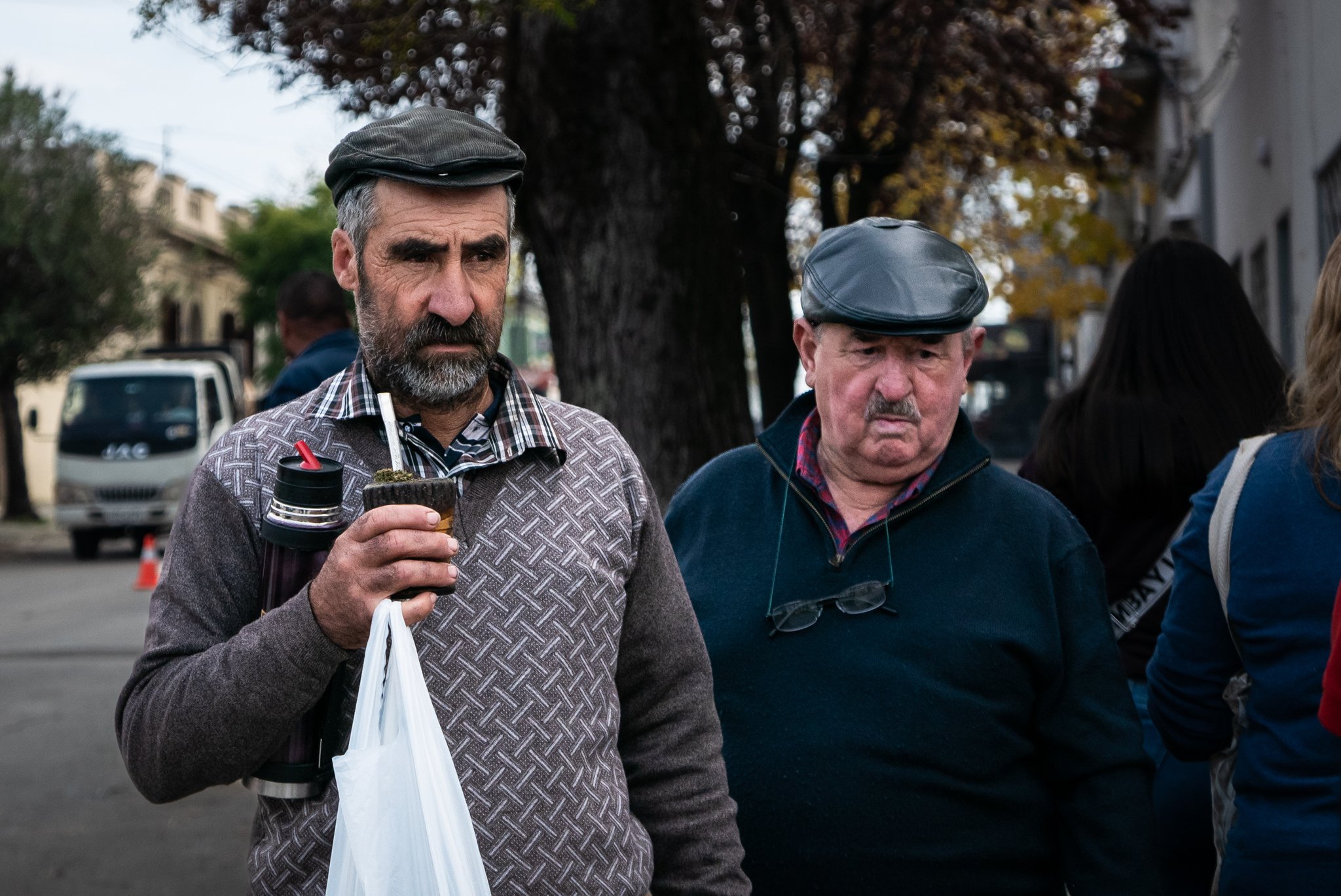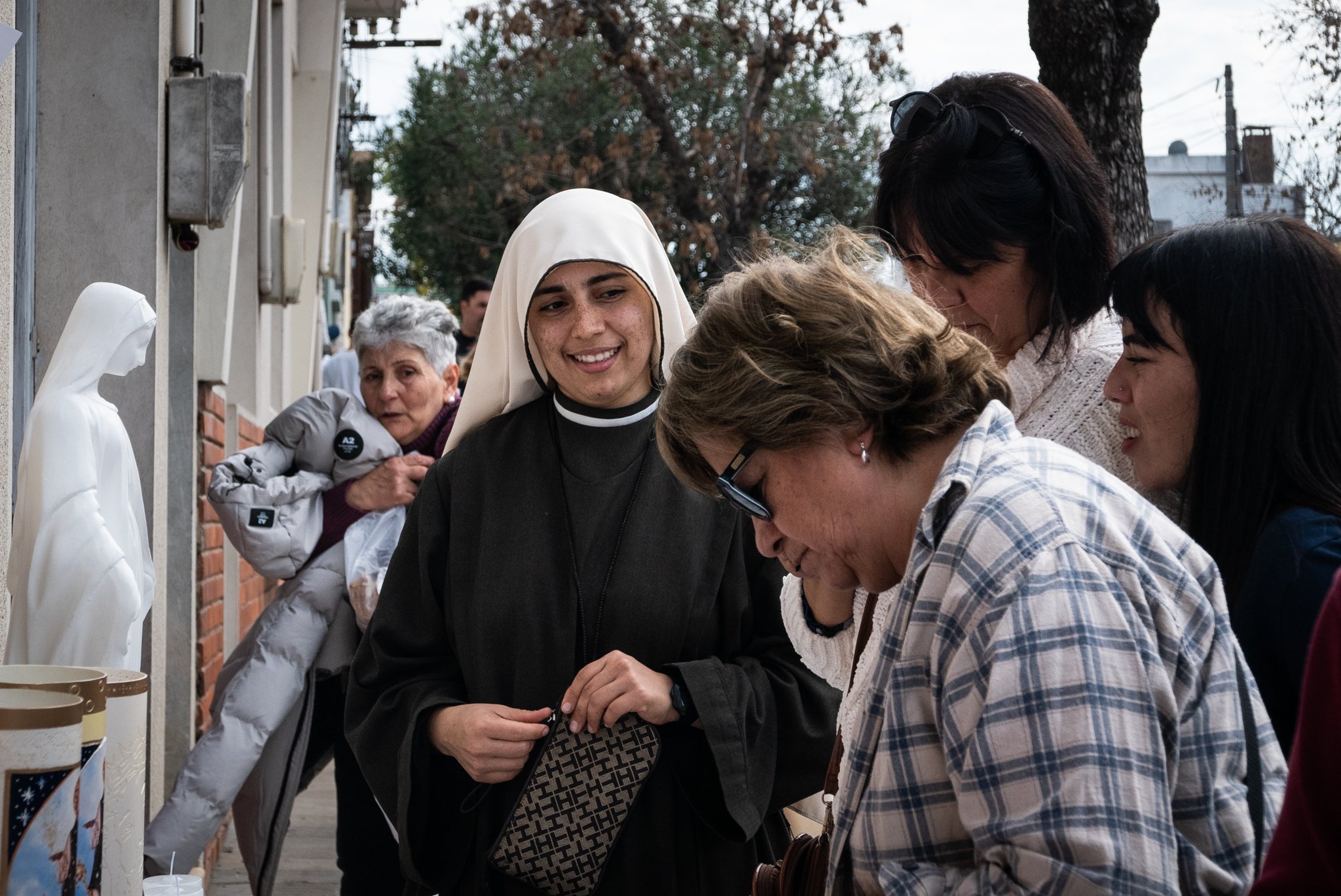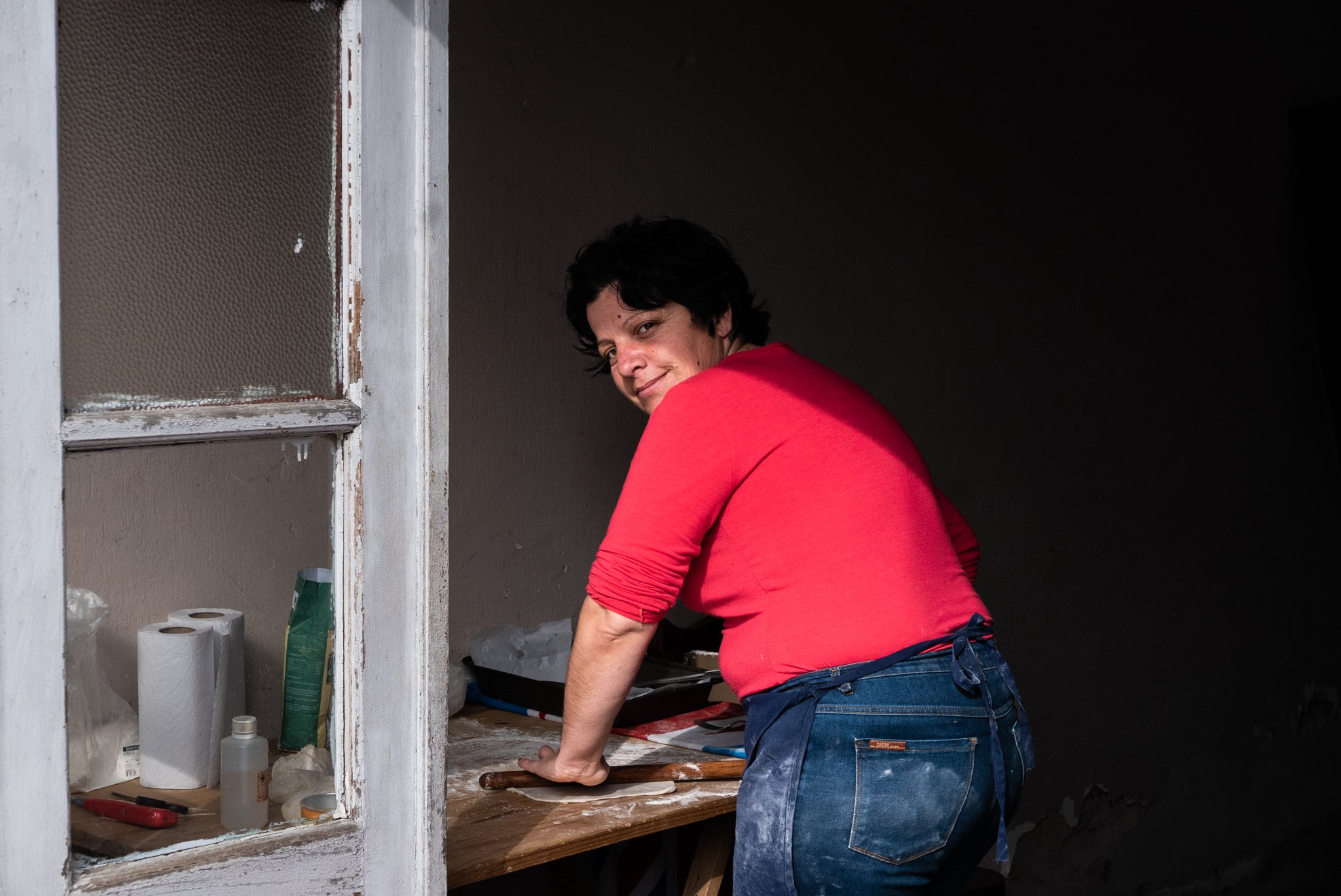by Eduardo Storch
On June 3, I went with two friends to the city of Florida, about 100 km from Montevideo, to see and photograph the celebration of “San Cono”, which takes place every June 3, on each anniversary of its arrival to the city.
It was predicted that it would rain but except for some slight drizzle and heavy and threatening clouds, the weather accompanied the walk.
“Cono of Teggiano” was an Italian religious born in the city of Teggiano in the 12th century AD. in the Salerno region (Italy). Considered a saint by the local inhabitants, they transferred their cult from Teggiano to America, especially to the Uruguayan city of Florida 138 years ago and people came to pray for luck, money and work.
That day in the lottery game, the numbers corresponding to June (6) and 3, are limited since there are thousands of people who bet on those “lucky” numbers.
Beyond the traditional procession, which always takes place at 2 pm, there are many other celebrations that constitute a great popular festival and tourist attraction, so we assumed that it would be a good idea to visit and take photos.
Throughout the week there are musical shows, a paragliding show, a circus, rural tourism proposals, activities at the hippodrome and many others, apart from the religious celebration itself.
The image of the saint is not administered by the religious authority but by a community of descendants of immigrants who publicize the festivity.
Since we arrived in the city, the great movement of buses from all parts of the country that brought the pilgrims was appreciated. There were closed streets, full restaurants and thousands of people everywhere. A true festival of colour, aromas, music and the bustle of street vendors.
Since the early morning, around the Chapel of San Cono, a huge fair has been set up with stalls selling candles, stamps, key rings, pins and images of the saint everywhere, but in addition to these religious objects there are stands with stalls selling food, clothes, toys, stones, jewellery and thousands of other things.
Some people arrive the day before and make a real camp near the chapel with the objects they sell.
Outside the procession circuit, the locals also offer all kinds of things at their doorsteps, from pizza, hot water, empanadas, caramelized peanuts, churros, hot dogs, puffed corn, barbecue, and even clothing or handicrafts. The city seemed to have been transformed into a large outdoor mall.
Usually the chapel is visited by thousands of people, but on the day of San Cono an immensity of men and women, children and entire families arrive.
Everyone tries to get close to the image of San Cono, touching his clothes, caressing him, leaving him offerings, giving him money and hanging rosaries, bracelets, watches, rings and all kinds of offerings.
At the back of the chapel there is a room for offerings. There are various bicycles, bridal gowns, diverse clothing, sports shirts, showcases full of valuable rings, necklaces, bracelets, watches and other diverse jewellery, dolls and the widest variety of imaginable offerings.
That room is guarded by the police and you can't take pictures. When I consulted the reason for this ban, they told me that it was because that room had been robbed on a few occasions and they did not want its content to be disclosed.
With difficulty we found a restaurant where we could have lunch since they were all full. What predominated in the gastronomic offer was the traditional roast, chorizos, but also schnitzel, fries with the inevitable fried egg on top...
At 2:00 p.m. the procession began punctually, some people walked barefoot carrying the sculpture of the saint on their shoulders through the streets of the city and accompanied by thousands of faithful despite the threatening rain that day. Prayers and thanks to San Cono were constantly passed through the loudspeakers distributed along the route.
We walked with the pilgrims, I was able to do some "close-ups", and then we walked around and photographed places in the environment, as well as interesting characters that we met along the way, most of whom were completely oblivious to the celebration, and many others who also offered something at the door of their modest houses on the outskirts, which allowed us to complete the stories that occur during the festivity and that I want to share with you.


































